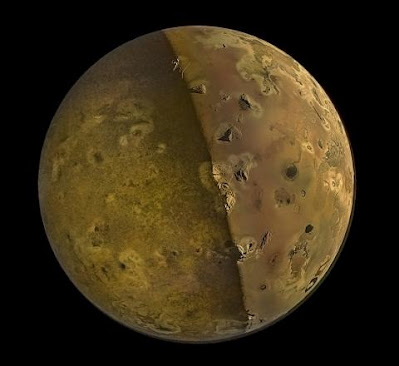NASA has released a new series of images of Jupiter's moon Io, following a close pass of the moon by its Juno Spacecraft on 30 December 2023. Juno passes within 1500 km of the moon, the closest any spacecraft has come to Io since the Galileo Spacecraft- made a pass at 181 km in 2001 (for comparison, the International Space Station orbits the Earth at 408 km). The flyby is the closest the spacecraft has come to the moon in a series of passes that began in July 2022, with the intention of studying Io and its volcanoes.
Io is the innermost of the four Galilean Moons of Jupiter (the four large moons discovered by Galileo Galilei in January 1610), and is one of the most distinctive bodies in the Solar System, with a surface dominated by a series of extensive volcanic fields. The volcanism is thought to be caused by tidal forces, as Io is pulled by the gravitational forces of both Jupiter and the other large Galilean Moons, deforming and heating the moon's interior. This has led to a body unlike any other in the Outer Solar System, with no significant ice or hydrocarbon deposits (presumably lost due to the heat of the volcanic activity) and a silicate rock surface surrounding an iron or iron-sulphur core.
See also...
Follow Sciency Thoughts on Facebook.
Follow Sciency Thoughts on Twitter.








